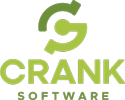Home > On-Demand Archives > Demos >
Try Lager Data and Rediscover that Passion for Firmware Development!
- Lager - Watch Now - EOC 2021 - Duration: 02:43

Agree, a super fun little short. :-) And just enough of a prod for me to look up Lager Data.
How does this differ from a network-attacked JTAG Debug interface?
Hi Bruce,
Thank you very much for your question! I'm assuming you meant to write "network-attached" JTAG, and will answer based on that, but if you didn't please let us know!
A network-attached JTAG debug interface is only a small subset of what the Lager Gateway enables. In addition to JTAG/SWD it also gives users remote access to GPIO/ADC/SPI/I2C/BLE/USB/UART and additional functionality via Gateway daughter boards (e.g. PWM, DAC). We also have a very intuitive interface for allowing users to run custom Python Code on our Gateways that can take advantage of all the above mentioned hardware. This makes test automation extremely easy to set up.
But in addition to giving users remote access, we have a robust networking backbone built on top of WireGuard (a VPN technology) that protects your development hardware from attackers. A standard networked JTAG interface is extremely vulnerable to malicious actors. Hopefully that answers your question, but if not don't hesitate to reach out to us at "support@lagerdata.com"!


























Favourite presentation of the conference so far. Despite being all sales pitch and even an offer I'm dubious on. But it's a pitch an engineer can love. "Old you" - love it.